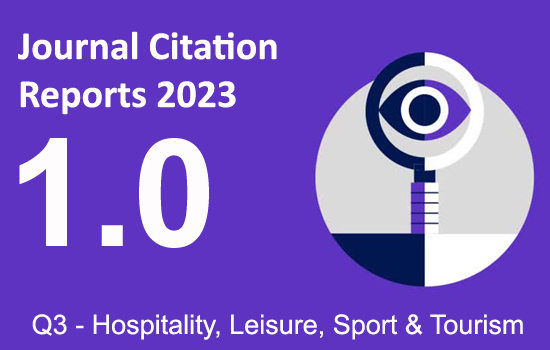Aprendiendo el arte marcial indio del kalarippayattu: ecologías inciertas de género, clase, cultura y etnicidad
DOI:
https://doi.org/10.18002/rama.v5i2.110Palabras clave:
Relaciones interculturales, relación profesor-alumno, gurú, discípulo, contacto físico, contacto verbalResumen
Sobre la base de la experiencia de campo de la autora en el estudio del arte marcial tradicional del sur de la India del kalarippayattu, este artículo examina las complejidades de la comunicación, incluyendo la utilización del tacto como herramienta educativa, en una relación intercultural profesor-alumno, y resalta cómo el género, la cultura y la clase tienen un impacto en el aprendizaje de esta forma de arte encarnado.
Descargas
Métricas alternativas
Citas
Anti-Defamation League. (2003). Unraveling anti-Semitic 9/11 conspiracy theories. New York: Gorowitz Institute. Consultado el 20 de abril de 2010 de www.adl.org/anti_semitism/9-11conspiracytheories.pdf
Behar, R. (1996). The vulnerable observer: Anthropology that breaks your heart. Boston: Beacon Press.
Chiang, L. (1994). Beyond the language: Native Americans’ nonverbal communication. (ERIC Document Reproduction Service No. ED 368540). Consultado de la base de datos ERIC.
Churchill, C. (1968). The marriage of Toby’s idea of Angela and Toby’s idea of Angela’s idea of Toby. Obra teatral no publicada.
Classen, C. (1993). Worlds of sense: Exploring the senses in history and across cultures. New York: Routledge.
Cooks, L., & LeBesco, K. (2006). Introduction: The pedagogy of the teacher’s body. The Review of Education, Pedagogy, and Cultural Studies, 28: 233-238.
Freedman, D., & Holmes, M. (Eds.) (2003). The teacher’s body: Embodiment, authority, and identity in the academy. Albany: State University of New York Press.
Geurts, K. (2002). Culture and the senses: Bodily ways of knowing in an African community. Berkeley: University of California Press.
Johnson, T. (2006). Performing a/sexual teacher: Cartesian duality in education. The Review of Education, Pedagogy, and Cultural Studies, 28: 253–266.
Kale, P. (1970). The guru and the professional: The dilemma of the secondary school teacher in Poona, India. Comparative Education Review, 14(3): 371– 376.
Lave, J. (1977). Cognitive consequences of traditional apprenticeship training in West Africa. Anthropology and Education Quarterly, 8(3): 177–180.
Light, R. (2001). The body in the social world and the social world in the body: Applying Bourdieu’s work to analyses of physical activity in schools. Consultado el 15 de julio de 2009 de http://www.aare.edu.au/01pap/lig01450.htm
Ness, S. (1992). Body, movement, and culture: Kinesthetic and visual symbolism in a Philippine community. Philadelphia: University of Pennsylvania Press.
Neuman, J. (2005, 21 de octubre). History of the world, Part 2: Jewish conspiracy theory: The satire. Slate. Consultado el 20 abril de 2010 de http:// www.slate.com/id/2128525/
Osella, C., & Osella, F. (1998). Friendship and flirting: Micropolitics in Kerala, South India. Journal of the Royal Anthropological Institute, 4(2): 189–206.
Pitton, D., Warring, D., Frank, K., & Hunter, S. (1994). Multicultural messages: Nonverbal behaviors in the classroom. (ERIC Document Reproduction Service No. ED362519). Consultado de la base de datos ERIC.
Radford, J. (2009, agosto). Word searches: On the use of verbal and non-verbal resources during classroom talk. Clinical Linguistics and Phonetics, 23(8): 598–610.
Sapon-Shevin, M. (2009). To touch and be touched: The missing discourse of bodies in education. En H. Shapiro (Ed.), Education and hope in troubled times: Bold visions of change for our children’s world (168–183). New York: Routledge.
Stahl, R. (1994). Using “think-time” and “wait-time” skillfully in the classroom (informe de mayo de 1994). (ERIC Document Reproduction Service No. ED30885). Bloomington, IN: ERIC Clearinghouse for Social Studies/Social Science Education.
Tincani, M., & Crozier, S. (2007, 25 de septiembre). Comparing brief and extended wait-time during small group instruction for children with challenging behavior. Journal of Behavioral Education, 16: 355–367. Consultado de la base de datos ERIC.
Zarrilli, P. (2000). When the body becomes all eyes: Paradigms and practices of power in kalarippayattu, A south Indian martial art. Oxford: Oxford University Press.
Descargas
Publicado
Cómo citar
Número
Sección
Licencia
Derechos de autor 2012 Sara K. Schneider

Esta obra está bajo una licencia internacional Creative Commons Atribución-NoComercial-CompartirIgual 4.0.
Los autores que publican en esta revista están de acuerdo con los siguientes términos:
- Los autores ceden de forma no exclusiva los derechos de explotación (reproducción, distribución, comunicación pública, transformación) a la Universidad de León, por lo que pueden establecer, por separado, acuerdos adicionales para la distribución no exclusiva de la versión de la obra publicada en la revista (por ejemplo, alojarlo en un repositorio institucional o publicarlo en un libro), con un reconocimiento de su publicación inicial en esta revista.
- Este trabajo se encuentra bajo la Creative Commons Attribution-NonCommercial-ShareAlike 4.0 International License. Puede consultarse desde aquí la versión informativa y el texto legal de la licencia.
- Se permite y se anima a los autores a difundir electrónicamente las versiones pre-print (versión antes de ser evaluada) y/o post-print (versión evaluada y aceptada para su publicación) de sus obras antes de su publicación, ya que favorece su circulación y difusión más temprana y con ello un posible aumento en su citación y alcance entre la comunidad académica.











